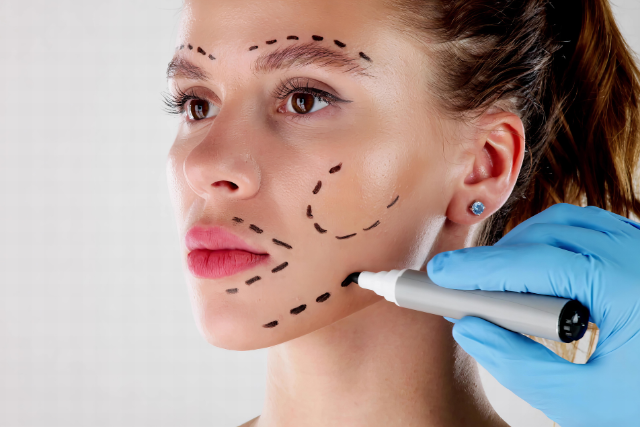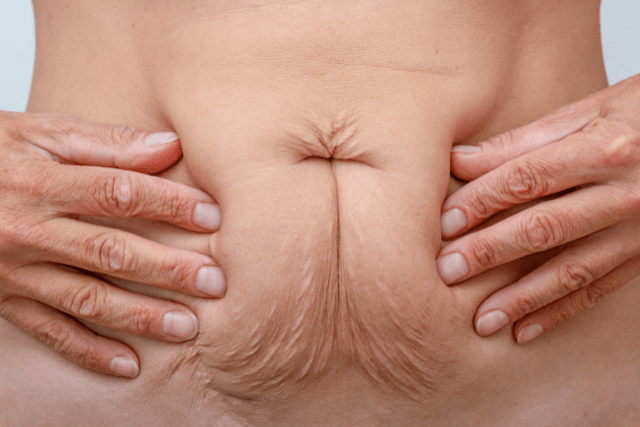As we age, our faces naturally undergo changes that can affect our appearance and self-confidence. Facelift surgery, or rhytidectomy, offers a solution to address these changes by tightening and lifting the skin and underlying tissues of the face and neck. However, not all facelifts are the same. Understanding the different types of facelifts available can help you make an informed decision about which procedure aligns best with your aesthetic goals.
At IBI Plastic Surgery & Med Spa in Hudson, Florida, we specialize in various facelift techniques tailored to meet the unique needs of our patients. In this comprehensive guide, we will explore the most common types of facelifts, their benefits, and how to determine the best option for your face.
Understanding Facelift Surgery
Facelift surgery focuses on the lower two-thirds of the face, targeting areas such as the cheeks, jawline, and neck. It addresses visible signs of facial aging, such as:
- Loose and sagging skin
- Deep wrinkles, creases, and folds
- Loss of facial definition
- Drooping cheeks
- Excess or displaced fat
- Jowls
- Double chin
By selecting the appropriate facelift technique, a skilled surgeon can restore a more youthful and refreshed appearance.
Types of Facelift Procedures
1. Traditional (Full) Facelift
The traditional facelift is the most comprehensive surgical option, designed to address moderate to advanced signs of aging. It involves making incisions along the hairline, continuing in front of and behind the ears, and extending to the lower scalp. Through these incisions, the surgeon lifts and repositions the underlying facial tissues, removes excess skin, and tightens the remaining skin for a smoother, more youthful contour. This technique can provide dramatic and long-lasting results, typically lasting 10 to 15 years.
2. Mini Facelift
The mini facelift, also known as a short-scar facelift, is a less invasive procedure aimed at addressing early signs of aging, such as mild sagging along the jawline and cheeks. Smaller incisions are made, often confined to the area around the ears, resulting in a quicker recovery time and less noticeable scarring. While the results are subtler compared to a traditional facelift, a mini facelift can provide a refreshed appearance with minimal downtime.
3. Deep Plane Facelift
The deep plane facelift is a more advanced technique that lifts the deeper layers of facial tissue, including the SMAS (superficial musculoaponeurotic system) layer, as a single unit. This approach allows for more significant lifting and repositioning of facial structures, resulting in a more natural and longer-lasting outcome. It is particularly effective for patients with significant sagging and deep wrinkles. However, due to its complexity, it requires a skilled and experienced surgeon.
4. Mid-Facelift
The mid-facelift focuses on rejuvenating the middle third of the face, particularly the area around the cheeks and lower eyelids. It is ideal for individuals experiencing sagging in the cheek area and deep nasolabial folds. The procedure involves lifting and repositioning the underlying tissues to restore volume and smooth out wrinkles. A mid-facelift can be performed alone or in conjunction with other procedures, such as eyelid surgery, for comprehensive facial rejuvenation.
5. Neck Lift
A neck lift, or lower rhytidectomy, specifically targets the area beneath the chin and along the jawline. It addresses sagging skin, excess fat, and muscle banding. In most cases, surgeons make incisions under the chin and behind the ears. After that, they remove excess skin and fat, tighten the underlying muscles, and redefine the jawline. Moreover, this procedure can be performed alone. However, it can also be combined with a facelift to achieve a more youthful and contoured appearance.
6. Non-Surgical Facelift Options
For individuals seeking facial rejuvenation without the commitment of surgery, several non-surgical options are available:
- Injectable Fillers: Substances like hyaluronic acid are injected into areas of volume loss, such as the cheeks and under the eyes, to restore fullness and smooth out wrinkles.
- Botox: Botulinum toxin injections relax facial muscles to reduce the appearance of dynamic wrinkles, particularly around the forehead and eyes.
- Thread Lifts: Dissolvable threads are inserted under the skin to lift and tighten sagging areas. While results are temporary, this procedure offers a non-invasive alternative to traditional facelifts.
These non-surgical options require minimal downtime and can be performed in-office, thus making them appealing for individuals with busy lifestyles.
Choosing the Right Facelift for Your Face
Selecting the appropriate facelift procedure depends on various factors, including:
- Age and Skin Condition: Younger individuals with mild signs of aging may benefit from a mini facelift or non-surgical options, while older patients with more pronounced sagging may require a traditional or deep plane facelift.
- Facial Anatomy: The structure of your face, including bone structure and skin elasticity, can influence the type of facelift that will yield the best results.
- Aesthetic Goals: Consider the specific areas you wish to address, such as the jawline, cheeks, or neck, and discuss these goals with your surgeon to determine the most suitable procedure.
- Recovery Time: Some procedures offer quicker recovery times than others. Discuss your lifestyle and time constraints with your surgeon to choose a procedure that aligns with your schedule.
At IBI Plastic Surgery & Med Spa, our team of experienced surgeons will conduct a thorough consultation to assess your facial anatomy, discuss your aesthetic goals, and recommend the most appropriate facelift technique for you.
What to Expect During the Facelift Process
Consultation
Your journey begins with a comprehensive consultation, during which your surgeon will:
- Review your medical history and discuss any underlying health conditions.
- Assess your facial anatomy and skin quality.
- Discuss your aesthetic goals and expectations.
- Explain the different facelift options and recommend the most suitable procedure.
- Provide information on the surgical process, anesthesia options, and recovery timeline.
Surgery
Facelift procedures typically use general anesthesia or IV sedation, depending on the surgery’s complexity and the patient’s preference. The surgeon adjusts the duration of the surgery based on the type of facelift and the procedure’s extent. Also, the surgeon strategically places incisions to minimize visible scarring and removes excess skin and fat when necessary. The surgeon lifts and repositions the underlying tissues to create a more youthful contour.
Recovery
Post-operative recovery varies depending on the type of facelift performed:
- Traditional Facelift: Recovery typically takes 2 to 4 weeks. Swelling and bruising are common but subside over time. Most patients can return to work and normal activities within 2 to 3 weeks.
- Mini Facelift: Recovery is generally quicker, with many patients resuming normal activities within 1 to 2 weeks.
- Deep Plane Facelift: Due to the more extensive nature of the procedure, recovery may take longer, with swelling and bruising persisting for several weeks.
- Mid-Facelift and Neck Lift: Recovery times vary but are generally shorter than those for a full facelift.
Your surgeon will provide detailed post-operative care instructions to ensure optimal healing and results.
Final Thoughts
You should choose the right facelift procedure in consultation with a board-certified plastic surgeon. At IBI Plastic Surgery & Med Spa, our team commits to helping you achieve your aesthetic goals with personalized care and expert surgical techniques. Whether you’re considering a traditional facelift, a mini facelift, or exploring non-surgical options, our team is here to guide you through every step of the process.
Ready to rejuvenate your appearance? Contact IBI Plastic Surgery & Med Spa in Hudson, Florida, for a consultation. Our skilled surgeons will create a customized treatment plan tailored to your unique needs and goals.





